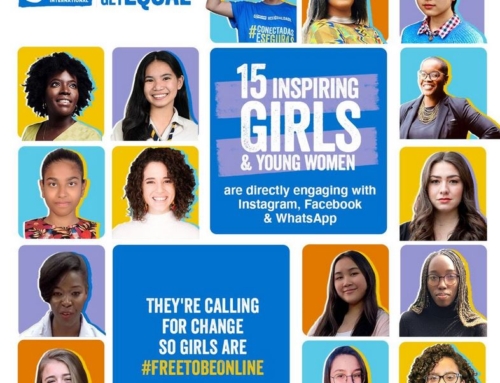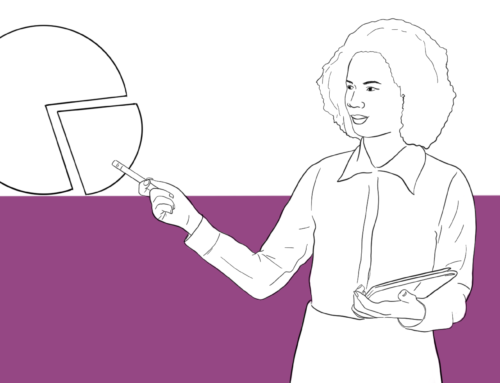109 years ago, the first-ever international women’s day occurred. This marked the beginning of an annual global day celebrating the social, economic, cultural, and political achievements of women around the world. This day is also geared towards accelerating gender equality and this year’s celebration was about collective individualism under the theme #EachforEqual. In celebration of Women’s Month this March, Pollicy is championing women forging technology innovations and reflecting on how collective individualism can accelerate gender equality. Just before International Women’s Day this year was the International Open Data Day. The Open Data Day is an annual event dedicated to promoting awareness and the use of open data. This year’s celebration marked the tenth anniversary of open data day and focused on the global open data day theme: open data for equal development.
On March 5th, in celebration of both Open Data Day (March 7) and Women’s Day (March 8), with the support of the Open Heroines network, we opened our doors for a public discussion on “Open Data for Women’s Empowerment”. The event brought together data enthusiasts, academia, students, innovators, and other professionals to explore what open data really means within the Uganda context, its relevance, current applications, and ongoing challenges. The discussion was coordinated and moderated by Sandra Nabulega.

How do we define Open Data?
The conversation began with participants speaking about the different definitions of open data, its characteristics, the ease (or difficulty) in sourcing open data, and Uganda’s open data policy.
Participants defined open data as data that can be easily accessible, freely used, re-used and redistributed by anyone. One of the speakers Joan Katamba from Uganda Institute of Communication and Technology (UICT) explained that the Ugandan Bureau of Statistics (UBOS), one of the government bodies that collect data on most of the government projects/service delivery, has tried to make open data understandable, by providing data dictionaries for most of the datasets that they share with the public. She further explained that data dictionaries are a legend that explains the dataset such that people are able to make sense of the data. Bonnita from Pollicy added that UBOS also produces reports in different languages for different regions in a further effort to increase accessibility and comprehensibility.
How do we access Open Data?
On finding open data, participants mentioned that open data sources currently accessible to the public include; UBOS, Data. ug, Open data network, kumu.io, where they can find data related to most of the government services, Bank of Uganda’s website for currency exchange rates, university websites for information on courses, and Ministry of Health open sites for data on various health services. In addition to this, participants also applauded the Government of Uganda for its significant progress on its open data initiative which has seen the government continuously provide information on the national budget allocations, revenue collections, and other statistical bulletins through online publication by the Ministry of Finance, Planning and Economic Development, the online publication of the Government Annual Performance Report (GAPR) by the Office of the Prime Minister, the online publication of Census and National Survey Reports and data sets by Uganda Bureau of Statistics (UBOS) and more.
Digital vs Paper-based?
An important conversation came up on whether open data should always be digital or if it still meets the criteria when available offline. Bridget Kezaabu from the Contraceptive Google Map team mentioned that people still use notice board-pinning to share information they deem important to the public. She mentioned that in Busia and Pallisa districts, public health facilities pin information about the breakdown of funds and services delivered in health facilities. Bonnita also added that open data should encompass both digital and offline and gave examples of other public health facilities that provide data to the public on health facility registers, forms where different services are recorded among others.
Benefits of Open Data
Bonnita then opened the dialogue to the benefits of open data. Several benefits were mentioned including open data being good for transparency and fostering innovation. In support of open data being used for innovation, a participant mentioned that if an innovation is not based on open data then it is something that is not needed by the people because open data is the backbone of innovation. Furthermore, on innovations using open data, Joan mentioned that the Ministry of ICT has the national ICT innovation program and most solutions for the various sectors like health, agriculture are based on open data. Open data allows for open dialogue i.e. freedom of expression. Also through open data, the government is able to work for the citizens-open data is a vital component in the feedback loops for improving service delivery. It leads to an improvement in data quality itself because users raise feedback or queries about data. Lastly, through access to open data, advocacy groups can better function and push for important social changes.
Presentations
Following these open discussions were presentations by three innovators using open data. Phillip Ayazika from Hire the Youth shared about how open data innovation is being used to tackle youth unemployment. Hire the Youth has open data platforms that ensure that young people have access to information related to employment. Such open data include real-time data on human capital, regional skills gap, and government programs, etc. This innovation puts out information that speaks to the needs and experiences of young people, especially fresh graduates. It matches young people to jobs that require low levels of experience. They also publish as much information as possible about labor market data: what are the trends in employment, what is the future of work, and what jobs and digital skills are emerging. They usually ask questions like “Are you unemployable or are you unemployed?”. Lastly, Hire the Youth breaks down information on the internet about mental health and makes it accessible to young people, including providing linkage to support.
Another innovator Bridget Kezaabu of the Contraceptive Google Map also shared how open data is being used to ensure contraceptives availability in public health facilities in Kawempe. The contraceptive google map has health facilities with information about which contraceptives and reproductive health services are available. She shared a short video to understand more about the map and why it was developed.

We ended the discussions with a presentation from Joan Katambi, an assistant lecturer from the Uganda Institute of Information and Communication Technology (UICT). Joan gave a brief background of UICT and its goal. UICT is the only government institution that specializes in skills-based and middle-level ICT training. She talked about the innovation hub being constructed by the Government of Uganda which will be using open data to create solutions for ongoing problems. The Principal of UICT is the brain behind the open data policy in Uganda. The government of Uganda through the Ministry of Information, Communications Technology and National Guidance released the first draft of Uganda’s open data policy in May 2017. Under this policy, certain data held by the government is to be made publicly available and presented in accessible and reusable formats to improve the accountability and transparency of government as well as act as a resource to enhance and transform the delivery of government services. In addition to this policy, Uganda’s Access to Information Act (ATIA) 2005 also demonstrates a step forward for the government’s willingness to provide useful public information to citizens. However, making this data/information available is not sufficient and people need to understand what open data is in order to be able to use it. The Principal of UICT is working on how to use open data in education to solve the problem of lack of awareness about open data among educators.
Has Open Data empowered women in Uganda?
Although open data has the potential to change and empower women in Uganda and Africa as a whole, open data use among women is still limited by the lack of open culture, the existence of processes that are not gender-sensitive, cultural and social constraints against women, insufficient datasets to support advocacy amongst women, the lack of funding and many others. Women are often left out from the decision-making processes in how the projects are developed, what data is collected, what resources are used, and what opportunities can arise from the use of data. The current climate of open data ignores diverse views of knowledge generation, power distribution, and a vision of the future we want to see. How is the knowledge that a woman in rural Uganda possesses being used to improve the life of a woman in another village across the country? How does digitalization impact how knowledge is shared and utilized? How do we bring more women to the table to talk about what a UGANDAN open data movement actually looks like, in a way that benefits and empowers ALL Ugandan women?
We realized that there is a need to continuously ask ourselves these questions and reshape the narrative around open data. We have a lot of work to do! Finally, we ended the event with cutting cake thereafter, networking, drinks, snacks, and music.
Written by Sandra Nabulega, Junior Research at Pollicy





Leave A Comment